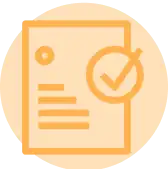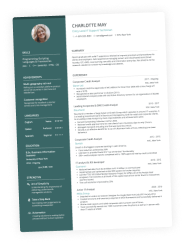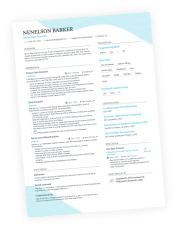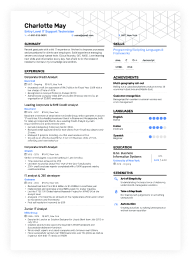Hiring managers spend seconds reviewing each CV that lands in their inbox. Yes, your application may get no more than a cursory glance before it ends up in the “no, thank you” pile. The challenge is clear: How can you capture attention and compel them to keep on reading?
Writing an engaging and informative personal statement may be the answer. While many UK job-seekers skip over this step—or worse, write something generic like “hard-working team player”—it’s an opportunity to set yourself apart from the competition. Get it right, and you’re already ahead.
This CV section is more important than you might think. It’s often what hiring managers read first, and so it sets the tone for your entire application. Plus, if the employer is using an Applicant Tracking System (ATS), this is a chance to slide in some keywords and phrases.
In the following guide, we’ll take you through everything you need to know, from what a personal statement is to how you can craft a scroll-stopping one.

Key takeaways
- Write it last, using your finished CV to pull the strongest highlights.
- Keep it to three or four sentences focused on your title, years, sector, and core skills.
- Tailor it to the job description with the employer’s keywords to pass scans and show fit.
- Prove impact with numbers and outcomes rather than vague claims.
- Identify and use a clear USP that shows what sets you apart.
Does your CV live up to its full potential? Find out now by uploading it to Enhancv CV Checker.
Is your CV good enough?
Drop your CV here or choose a file. PDF & DOCX only. Max 2MB file size.
First things first, let’s talk about what a personal statement is, and why it matters.
What is a CV personal statement?
A personal statement is a short paragraph at the top of the CV. It covers who you are, what you offer a potential employer, and what you're aiming for. It needs to catch the reader’s attention and entice them to find out more about you—the candidate.
Your personal statement is a short introduction to who you are professionally and should include your skills and your career ambitions. It’s always a good idea to include your confirmed grade or experience.
While your personal statement is the most freeform part of your CV, it shouldn’t be mixed up with your cover letter or LinkedIn ‘About’ section. The main difference is that your personal statement is more concise and value-packed. It should be between three and four concise sentences covering your professional achievements and your goals.
Your cover letter, on the other hand, can be around 300 words and gives you the chance to offer context and share anything that’s not covered in your CV. Similarly, your LinkedIn ‘About’ section can be a little longer than a personal statement and is generally more informal in tone. It is social media, after all.
Don’t let the wording confuse you.
What bamboozles people the most about this section is the many names it goes by. You may have heard it referred to as a CV profile and even a CV opening statement. But the most common name (and the one recruiters recognise) is simply your personal statement.
Is it the same as an objective or summary?
Not exactly. While it’s common to use the terms objective and summary in the US, a British recruiter expects a more narrative-style personal statement or profile. Using the wrong one won’t necessarily mean that they reject you, but it could raise some eyebrows or make your CV feel out of place.
Types of personal statements for CVs and resumes
| Type | Purpose |
|---|---|
| CV summary | Used in the US, this is a short snapshot for experienced professionals. It includes your title, years, specialties, key results, tools, and what you want next. |
| CV objective | This is more common in the US, but is increasingly seen as outdated. However, for students, entry-level candidates, or career changers, it can be useful. This one states the role you’re targeting and the transferable skills and certifications. |
| CV profile | Common UK synonym for a personal statement. You can use this interchangeably when referring to this section in the UK. |
| Academic personal statement | This is used for PhD or teaching roles in the UK and beyond. It’s a longer piece that explains your research area, methods, outputs, teaching, and why the department is a good match. |
Next up, let’s talk about why perfecting your personal statement matters.
Why is a CV personal statement important?
Tempted to ditch this part of your CV? You might want to think twice. Your personal statement carries more weight than you might expect, and so it’s wise to spend a little time perfecting it.
Let’s take a look at some of the benefits of a well-crafted profile.
Makes the right first impression
You’ve got roughly 15-20 seconds to make the right first impression on a hiring manager. If nothing about your CV catches their attention, you might fall at the first hurdle. Luckily, your personal statement can be the solution. Packing it full of value and aligning it with the role immensely boosts your chance of success.
This will be the first thing an employer reads when they scan your CV. So it needs to be good. Pulitzer Prize good.
Highlights how you fit the role
Detail how your skills and work experience align perfectly with both the vacancy and the field. Make the connections that the hiring manager may miss when reading your CV. You can do this by highlighting your top achievements and drawing comparisons between your history and the role at hand.
Breezes past the ATS scan
If the employer is using an ATS, the software will scan your CV before the hiring manager does. These systems rank each application based on how well it fits the criteria of the role. By including the right keywords and phrases up top in this section, you give yourself the best chance of passing the scan. (Note: You can usually find these words by looking at the original job advert.)
Speaks directly to the reader
If you’re a student, career changer, or a career returner, there may be certain things you want to say to the hiring manager. For example, you may want to explain any gaps in your CV or talk about why you’re looking for a job to supplement your studies. This CV section gives you the space to make your case.
Now you’re clear on why your personal statement is important, let’s look at what makes a good one.

What makes a good CV personal statement?
- Tailored to the role: Your profile should use keywords and phrases from the job description and align with the demands of the role.
- Short and sweet: Personal statements should be no longer than between three and four sentences.
- It’s value-packed: Include important details, such as your current job title, how many years of experience you have, and your sector.
- Includes a USP: A good statement spotlights your unique selling point (USP). This is the thing that makes you stand out from the crowd.
- Measurable achievements: Back up any statements you make with measurable achievements. Use metrics—like statistics and numbers—where possible.
- Drop the “I”: Personal statements should be written in the first person, but omit personal pronouns such as “I” as these can waste space.
- Avoids clichés: For the best results, avoid tired phrases like “hard-working,” “motivated,” or “driven”. Instead, choose power adjectives that genuinely reflect your work ethic and soft skills.
Ready to get started with your personal statement?
Next up, we’ll look at how to write yours.
How to write the opening statement for your CV
Your CV personal statement has a lot of heavy lifting to do. But how can you make sure it’s the best it can be? If you’ve got a case of writer’s block, follow our steps below to create your profile.
Step 1: Start with who you are
The first part of a CV personal statement is easy. You’ll want to include your job title, years of experience in the field, or student status. You can also add an adjective at the start of your profile to hook the reader.
For example, you could write: “Dedicated Marketing Executive with 5 years of experience in digital campaigns and brand growth.”
On the other hand, a student may start with “Business Management student with strong analytical and teamwork skills, seeking an entry-level role.”
Let’s take a look at what not to do here:
Bad opening sentence for a project manager profile
I manage stuff from start to finish.
And here’s the new and improved CV introduction example with more detail and value.
Good opening sentence for a project manager profile
Organised Project Manager with 8 years’ experience delivering IT change across enterprise teams.
Step 2: Add your core skills
You’ve told the reader who you are. Now, let them know what you can do. Mentioning a couple of skills and strengths does just that. Include a mixture of hard skills and soft skills in this section.
You should tailor these to the job advert. Look at the description and pick out any core skills the employer mentions. Name-checking these in your CV personal statement is a fast way to show off your suitability.
Let’s say the job advert states you need to have top organisational skills and understand Excel. In that case, you might write “organised and detail-oriented with advanced Excel knowledge.”

Lead with your Unique Selling Point (USP)
What makes you different from other candidates? If you have a niche skill or you’ve worked for a big-name company, now’s the time to talk about it. Leading with something out of the ordinary is a quick way to make sure the hiring manager remembers your application.
Here’s a marketing profile that lacks this detail:
Personal statement with no skills
Marketing professional who manages projects from start to finish.
Next, take a look at how skills make that profile shine:
Personal statement with skills
Data-driven Marketing Executive with 5 years’ experience across paid social, SEO and email automation.
Step 3: Quantify your achievements
Here’s the golden rule: Whenever you make a big claim in your CV, back it up with concrete evidence. You can do this by adding numbers or outcomes into the mix. That way, when the hiring manager glances at your profile, they can quickly see the exact impact you had on the business.
For example, rather than saying “I improved team performance”, it pays to be more specific. Instead, you could write “I increased team productivity by 25% within six months by introducing new workflows”. The second sentence offers more value because it tells the reader exactly what you did in a timeframe.
Check out a bad example for a sales professional:
Personal statement with no numbers
Sales professional leading projects with experience in B2B SaaS and shortening the sales cycle.
Here’s how the right metrics add serious value to the example:
Personal statement with measurable results
Results-focused Sales Executive with 6 years’ experience in B2B SaaS, delivering £3.2m new ARR in 2024, averaging 118% quota attainment, raising win rate from 24% to 33% and shortening the sales cycle from 74 to 52 days.
Step 4: Position yourself as the right fit
Avoid using a copy-and-paste personal statement on all of your CVs. If you want to give yourself the best chance of success, you need to show why you’re right for this job. To do that, you should emphasise how your career history and long-term goals align with the vacancy you’re applying for.

Go back to the job description and do some research
When applying for a job, you need to tailor your personal statement to the role. Look at the core criteria and see whether the employer mentions any specific things you need to have. If they do, include these in your profile to draw attention to them from the offset.
If you write about your career goals, consider how this role fits into the bigger picture. What is it about this company—its values and mission—that aligns with your future prospects? Sharing a clear vision of where you plan to go in the future is a savvy way to show the reader that you’re thinking big.
Let’s take a look at an example of a profile that has not been tailored:
Generic personal statement
Hardworking professional looking for the next opportunity. Experienced in various tasks and a team player.
Next, take a look at how much better it can be when positioned well:
Tailored personal statement
Customer-focused Product Manager with 5 years in fintech, shipping mobile onboarding and KYC flows. Your ad calls for roadmap ownership, A/B testing and cross-functional delivery. Previous raised activation by 19% and cut sign-up drop-off by 23%.
Step 5: Keep it concise
The final step is to edit. If you’re prone to writing too much, this is your chance to bring things back. Remember, your personal statement should be between three and four sentences max. Any longer than that, and you’re unlikely to keep the reader interested in what you have to say.
Here’s an example of an unedited (too long) profile:
Long personal statement
I am an Operations Manager with over nine years of experience working across logistics, supply chain and warehouse optimisation. I have been responsible for many different projects and I enjoy taking on new challenges. I am passionate about improving processes and collaborating with teams to get things done. I am also comfortable with data, and I have used Excel, SQL and dashboards to track KPIs for stakeholders across the business. I am seeking a role where I can grow my skills, mentor others and contribute to a positive culture. I am reliable, organised and always meet deadlines. I believe my background would make me a great fit for a range of companies and I am happy to relocate for the right opportunity.
With some editing, this example becomes more bitesized:
Concise personal statement
Process-driven Operations Manager with 9 years in logistics and fulfillment. Cut pick errors by 32%, reduced unit cost by 14% and launched a shift model that lifted on-time dispatch to 98%. Skilled in SQL, Excel and Looker, with a track record of leading 25-person teams.
Now that you’ve got a clear idea of how to create your CV personal statement, we can move onto some examples you can use.
7 Examples of CV personal statements
Looking for some creative inspiration? We’ve got you covered.
The tone and approach you use in your CV personal statement will depend largely on your career stage and industry. To help you along the way, we’ve put together a selection of personal statement examples you can learn from.
Best-practice CV profile example
First up, we’re kicking off with a best practices CV profile example. The below sales professional summary starts strong with an introduction, includes key skills, metrics, and a hefty USP at the end.
Senior sales professional with 6+ years' experience in B2B software sales, consistently achieving 120% of annual targets within competitive technology markets. Expertise in consultative selling, relationship management, and complex deal negotiation. Successfully generated £2.3M in new revenue over the past two years whilst maintaining a 95% client retention rate.
Graduate or first job personal statement example
If you’re just starting out, it’s smart to rely on your exam results and any projects or internships you undertook. Mentioning these in your personal statement gives your CV extra weight and value.
Business Management graduate with First Class Honours seeking to launch a career in project coordination within the technology sector. Strong analytical and problem-solving abilities demonstrated through academic projects, including leading a team to deliver a market research project that achieved 85% client satisfaction rating. Gained practical experience through a three-month internship at a digital marketing agency.
Career changer profile example
Switching careers can be challenging. However, you can position your personal statement to explain why you’re doing so, and how you’ve prepared. The example below includes the candidate’s prior work and the steps they’ve taken to ready themselves for a new field.
Former secondary school teacher with 8 years' experience transitioning into human resources, bringing strong people management, training delivery, and organisational skills. Successfully managed behaviour improvement programmes that reduced student incidents by 35%. Recently completed CIPD Level 5 qualification whilst maintaining full-time teaching responsibilities.
Returning to work profile example
If you’re returning to work after any period, you can use your personal statement to explain what you’ve been doing in the gap. Be clear on how you’ve learned new skills while you were not working. This could be through freelance work, in your personal life, or via volunteer work.
Experienced marketing coordinator returning to the workforce after a one-year career break, bringing 7 years' previous experience in digital marketing and campaign management. During career hiatus, maintained industry knowledge through freelance social media consultancy projects, achieving an average 45% increase in client engagement rates across 8 small business accounts.
Senior or executive personal statement example
If you’re high up in your career, the hiring manager will expect big things from your CV profile. Make sure you’re clear on the value—monetary or otherwise—you brought to previous roles. Mentioning large business names or FTSE 250 organisations will also bolster your application.
Strategic Chief Operating Officer with 15+ years' leadership experience driving operational excellence and profitable growth across FTSE 250 organisations within financial services and retail sectors. Successfully led business transformation initiatives that delivered £12M cost savings whilst increasing operational efficiency by 28% across multiple UK sites.
Technical or IT role profile example
It pays to be specific when writing a technical CV profile. Since there are many paths you can follow, you need to be clear on what exactly you do. Name any languages you use and specify the impact your know-how had on your last workplace.
Senior Software Engineer with 8+ years' experience developing scalable web applications and cloud infrastructure for British e-commerce organisations. Expert in full-stack development using JavaScript, Python, and AWS services, with proven ability to architect solutions handling 2M+ daily transactions whilst maintaining 99.9% uptime.
Hospitality role profile example
Looking to make it in the world of hospitality? Include customer ratings as social proof of your hard work. You can slide in Google Reviews, TripAdvisor scores, or simply any feedback you’ve had. Pinpoint which area of hospitality you work in and where your experience lies, too.
Experienced hospitality manager with 9 years' expertise across traditional pubs and Wetherspoons sites. Successfully managed operations for a 100-cover chain pub, achieving 25% revenue growth whilst maintaining 4.8-star TripAdvisor rating and full compliance with environmental health and licensing regulations.
Next up, we talk about the common mistakes to avoid when crafting your CV profile.
Common mistakes to avoid
Following the advice we’ve shared is a quick way to master the art of writing a personal statement. However, there are some pitfalls you’re going to want to avoid.
Let’s break them down:
Writing a vague personal statement
You’re not simply trying to fill space. When you write your professional profile, it’s your chance to make a big impression on the reader. You’re not going to do that with vague or generic statements. Always add as much detail as the space will allow. Be specific about your role, the impact you’ve had, and any skills you use on a daily basis.
Adding too much information in a profile
If your personal statement is too long, it will read like a cover letter. You don’t need to write an essay to convince the hiring manager you’re right for the job. Think of this section like an elevator pitch. It includes the most notable and impressive things about your professional life. Cut everything else out.
Regurgitating the rest of your CV
Hiring managers may read personal statements first, but they go on to review the rest of your CV, too. You don’t need to repeat everything you say in the rest of the document up top. Doing so is a waste of space and means that your statement will be too long. Instead, pick out only the highlights here.
Failing to tailor your profile to the job
We can’t overstate the power of tailoring your CV and, in particular, your personal statement to the job. When you’re trying to catch the hiring manager’s attention, speaking their language is the answer. Using the same verbiage they do and ensuring you align with the role duties will help you pique their interest.
Don’t focus only on yourself. The best personal statements cover the skills you would bring to the company that no other candidate can.

Final tips for perfecting the opening statement of your CV
- Write it last: Don’t start with your personal statement. Use the information from your CV to write it at the end.
- Add keywords: Use words from the job advert throughout, but make sure they sound natural.
- Check it hits the mark: Use Enhancv’s CV checker to make sure your application is following the best practices.
- Save different versions. Keep various personal statements for different applications. You can often reuse one by doing some light editing. With Enhancv’s CV Builder, you can store multiple CV copies and even track your job applications effortlessly, making it easier to stay organised.
Takeaway
Your CV personal statement is a vital part of any application. Avoid generic, boring statements, and go with something hard-hitting that will wow the hiring manager. Follow the steps we’ve shared here to get it right from the start. Why not use our drag-and-drop CV Builder to get started?



